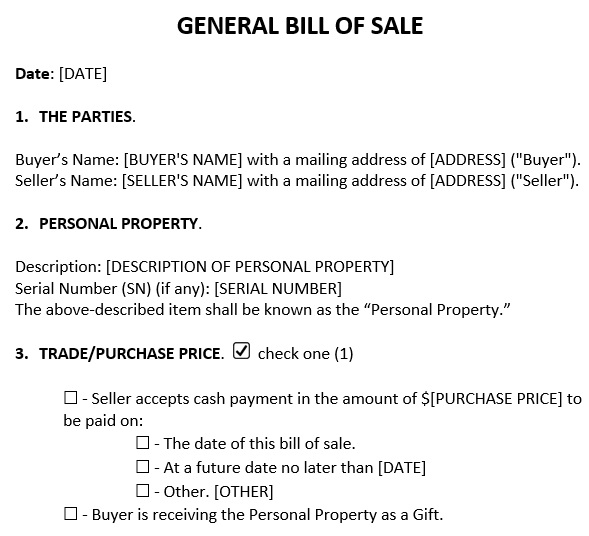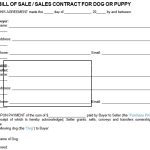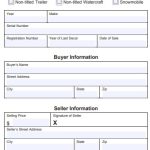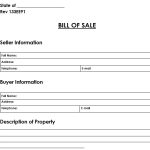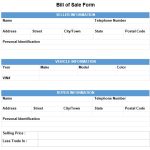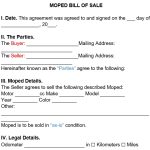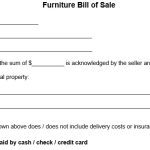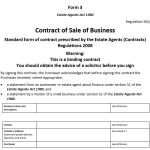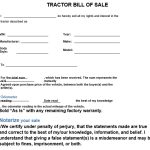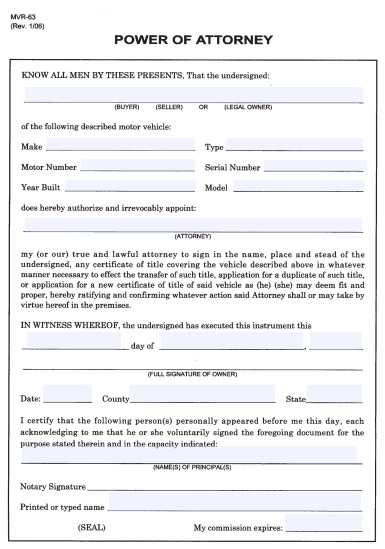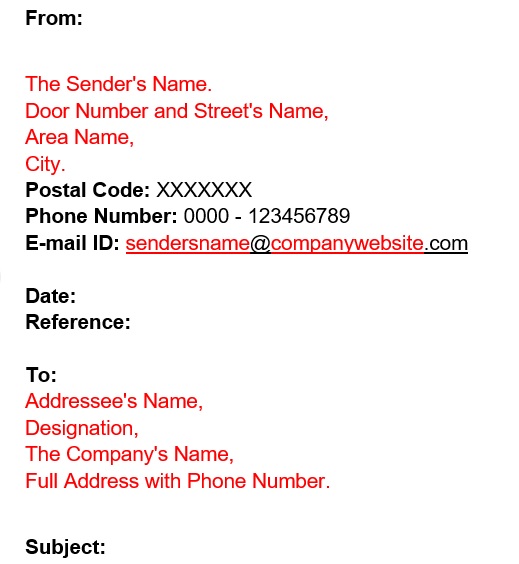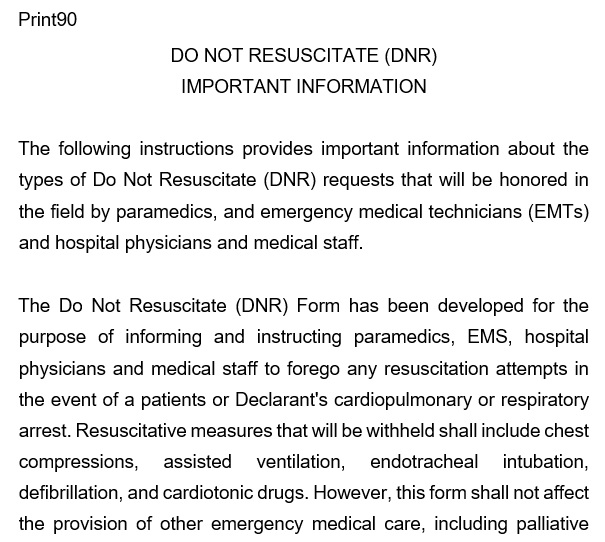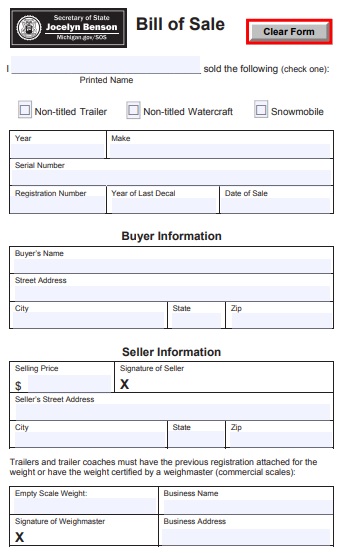A personal property bill of sale form is such a document that works as a receipt for any transfer of ownership from the seller to the buyer. Moreover, you can exchange the property in the form of cash or trade. Similarly, this form requires mostly by the new owner who is going to prove the first ownership. Further, the bill of sale keeps the record of two parties related to a transaction. This document needs to sign after the completion of the sale. All personal property you sold “as-is, where-is” that is without warranty.
A bill of sale and a receipt serve nearly the same purpose, but a bill of sale contains detailed information about the transaction while a receipt only shows proof of payment. Similarly, a bill of sale may serve as a receipt, but a receipt cannot serve as a bill of sale.
Physical possession of a property does not require for property ownership in many states. If you want to prove ownership of the property, you can use a personal property bill of sale. However, the bill of sale must contain all information about the transaction. In case of a dispute concerning the item(s), this will protect both the buyer and seller.
Who Uses Personal Property Bill of Sale Form?
Anyone buying or selling personal property must complete a bill of sale form. The document serves as proof of the transaction and protects the seller or buyer from future disputes. Similarly, those who purchase or sell items privately. Likewise, purchase or sell expensive or high-value property, those who buy or sell pre-owned items. Further, those who conduct online trades, and live in states where the property bill of sale form requires proof of ownership, may all benefit from this form.
People may need a bill of sale to prove ownership of an item even when there hasn’t been a sale. For instance, if a friend donates their motorcycle to a friend, they will have to provide the registration and insurance form and show ownership of the motorcycle. You may also like Tenant Information Update Form.
As an alternative, you may not need a property bill of sale form for some transactions involving the transfer of property. The following are examples which are links with transactions:
Real State
Due to the need for more forms from the state and local governments, it is not possible to use a bill of sale for this transfer as the transactions are typically more complicated than, for instance, the transfer of a vehicle.
Small-Scale Sales
If you are purchasing or selling inexpensive items or property, you do not need a bill of sale. Although it is a personal choice, it is not necessary to use the document.
Performance of Services
A bill of sale is not required when providing or receiving services, such as counselling, hairdressing, appliance repairs, etc., since there is no transfer of ownership. In case you are not sure whether a bill of sale is necessary, it is recommended that you consult an attorney.
The Need For Bill of Sale
If you intend to buy or sell a piece of personal property, you need a bill of sale. Because they cannot provide a bill of sale, people pay for damages, buy stolen property, or lose ownership of their property. When you buy any item that may require proof in the future, you should use a bill of sale.
Buyers and sellers both need it, and it protects their interests in case any issues arise during the exchange. However, there is almost no way to prove a transaction occurred without a bill of sale or receipt.
As a result, in the US, states like California require a written bill of sale when an item costs more than $500. In addition to being a legal document, it is also essential for tax purposes.
Further, this document becomes crucial when it comes to ensuring an item. To prove that you are the owner of the item that requires insurance, you will need the bill of sale. It is impossible to overstate the importance of using this document.
In addition to serving as proof of sale, it is also a legal document that uses to transfer title to vehicles and other personal property.
- A well-written bill of sale protects both buyers and sellers. A lot of states require it if you have to insure something.
- There are several advantages to having a bill of sale form for the buyer, including proof of ownership, warranty information, and the date of the sale.
- For the seller, “As-is” terms provide protection from refunds or warranties, easy tax reporting, and the transfer of ownership date.
Workings of Personal Property Bill of Sale Form
During the sale or purchase of a property, the bill of sale stores information about the transaction. The document serves as proof of ownership for the buyer and as protection for the seller in the event of a dispute.
The following information should include in your bill of sale:
Transaction Date
Both parties must sign the form and include the date that the sale occurred. If a bill of sale does not include the day, month, and year the trade took place, it isn’t legal. Similarly, you need a reference to the date.
Seller Details
The seller of the property should mention in this section of the document, including contact information and address. Additional sellers should mention here. For a buyer to feel credible, they need to know who they are doing business with.
Buyer Details
All contact information about the buyer, as well as any additional buyers, must include in the document.
Description of the item being sold
Detailed information about the item must be included in the bill of sale. Each detail about the item should be highlighted, including the colour, condition, appearance, missing components, age, size, and model. By implementing this measure, both parties will be fully aware of the item being sold.
In the case of cars, this section must include information about the VIN, odometer, body type, manufacturer, etc. Doing this creates transparency and reduces the risk of future disputes between the seller and buyer.
Sale Price
You must include the total cost of the item in the bill of sale. For Instance, If tax fees require on the item, this section of the bill provides the total price the buyer will have to pay. Words and numbers are also part to express the total price.
Sales Tax
If there is a tax on the item, the bill should highlight how the tax will affect its price. The bill of sale will indicate how much sales tax you will need to pay. You can include sales tax with the price of the item. Nevertheless, if the item is exempt from tax or the tax should pay in full, it should also note in the bill.
Inspection
A buyer will have a chance to inspect an “As-Is” item before paying if it is sold “as-is” and not covered by any warranty. There is a provision in this section that allows that.
Payment Method
The usual payment options include cash, online transfer, bank draft, check, and trading with another item of equal value. If you are transferring the item electronically, make sure the money has reached your account before you transfer the item.
Any Loans on the Item
Liens are records placed on an asset that ensure the proceeds from the sale of the asset will go to the lienholder. Whenever a property is used as collateral for a loan or lien, it must be noted in the bill of sale. An item can only be legally sold to a buyer when the loan is fully repaid and the lien is removed. In some instances, the buyer may agree to pay off the loan. However, the buyer is protected from having the item seized by a lienholder or creditor.
History of Ownership
In the bill of sale, the exact ownership information of the item should include. Similarly, information about who sold the item to the seller should also include, along with a statement that the seller is the sole owner of the item. To avoid future ownership disputes and to guarantee the legality of the seller’s claims, the seller must complete this step.
As-Is
The “As-is” clause in a bill of sale is proof that the buyer has agreed to buy the property “as is,” in its current state, shape, or form. Similarly, when a buyer makes full payment and receives the property, this clause states that the buyer will satisfy the state of the property, and it protects the seller from future liabilities.
VIN
Bill of sale forms must include a vehicle identification number (VIN). A VIN must match the car’s model, its assembly location, its year of manufacture, and other details.
Gift
Friends, colleagues, and relatives can gift one another property, and proof of ownership may be required to prove that the person in possession of the property is the legal owner. There is a provision in a bill of sale that states that the property was gifted rather than sold or bought.
Trade-In
To ensure that both seller and buyer get value for their items, the trade-in bill of sale will show the value of both items.
Witnesses and Notarization
It will be evidence, if the matter goes to court in the future, that both parties (buyer and seller) duly agreed to the transaction if the seller could have witnesses’ signatures. A public official must notarize your document in some states, though. As a result, the bill is more legitimate, which is useful if a dispute arises in the future.
Signatures
Ideally, the seller should sign the bill of sale. In some jurisdictions, however, the buyer must also sign it. Be sure to check local and state laws before signing your bill of sale.
State Laws
Each state has its laws regarding the bill of sale. In states such as California, a bill of sale requires when selling or buying items worth more than $500. It does not require insurance or tax purposes in some states, but in others it is. Notary publics require to witness the signing of the bill of sale in Louisiana, Nebraska, Maryland, Montana, and West Virginia, but not in any other state. An attorney can also assist you with the necessary details.
Conclusion:
A Personal property bill of sale form serves as a receipt for any type of personal property that is exchanging cash or trade. Similarly, for making a bill you need to provide property details along with the location. Further, you need the information of both the parties, names and addresses. Additionally, you will provide the property price. More, you will note any loans and liens and if there are any additional clauses, you will provide them. In the last, sign the document.
The bill of sale document is available in different formats. You can create it easily in a word document if you have little knowledge about it.
Faqs (Frequently Asked Questions)
In an “as-is” condition, the buyer agrees to buy the property in its current condition, and the seller provides no warranty on the property. After the buyer has agreed to pay for the property as it is, this protects the seller from having to pay for any damages or issues.
Only tangible or physical goods require a bill of sale form. Service Agreements uses to suit receiving or providing services.
Upon receiving full payment for the sale, you can deliver a copy of the document to the buyer.
To use a bill of sale as a receipt, you must transact physical goods. Further, You can use consulting agreements for services.


